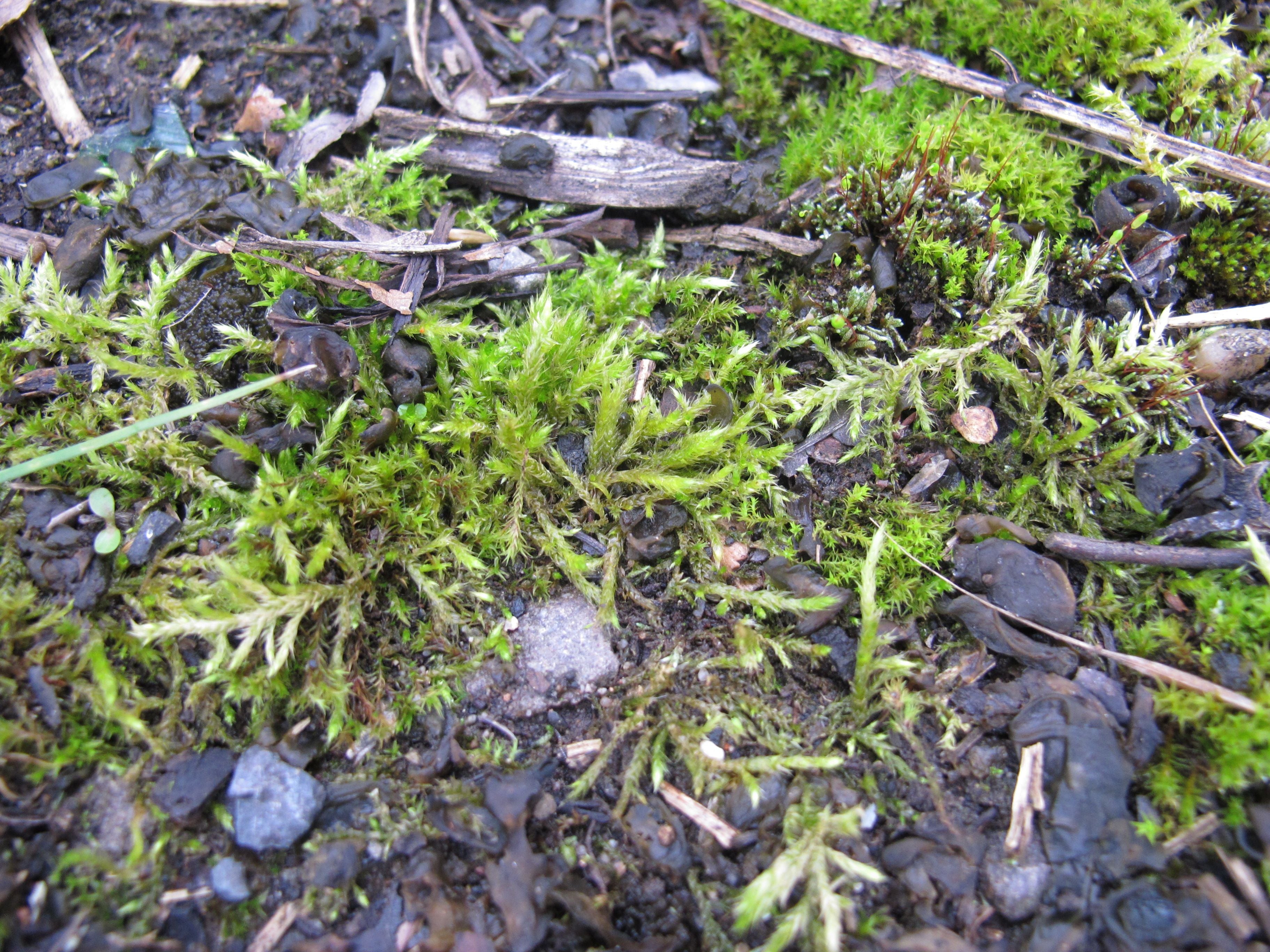Moss Removal
Introduction
Mosses are plants that do not have a vascular system. They are part of the Order called Bryophytes. The Order Bryophytes also contains the groups Mosses, Hornworts and Liverworts. After flowering plants and ferns, mosses are the most diverse form of plants with over 10,000 species in more than 700 genera; nearly twice as many genera as all the mammals on Earth.
Mosses are low growing species that have no vascular system and have no woody parts. The lack of a vascular system makes them susceptible to desiccation and therefore they tend to be found in damp, moist and even aquatic habitats although not exclusively and some species have remarkable adaptations to very dry habitats.
Moss can be a problem within turf and the appearance of hard surfaces such as patio's or tennis courts can be compromised by mosses. These two areas need to be considered separately as they require different solutions.
Identification
Mosses require a different solution to liverworts therefore it is useful to see what characteristics differentiate the two groups. Mosses are divided into two distinct forms, pleurocarps and acrocarps, Acrocarpous mosses are usually unbranched or almost so, and have an erect habit, like small trees. An example of a common acrocarp is Bryum argenteum, Silvergreen Bryum Moss, this is commonly found on acidic soils, grasslands, woodland rides, soil banks and waste ground notable for its large (3.5–5 mm long), cylindrical, drooping capsules ripen in spring and summer, and are borne on a reddish seta (stem that supports the capsule) up to 3 cm tall. Acrocarps are never regularly pinnately (fern-like) branched but have a central stem and leaves coming off that stem.
Almost all pleurocarpous mosses are freely branched, often either pinnate or chaotic. They frequently form dense intricate mats of elaborately branched stems. A common garden moss is Rhytidiodelphus squarrosus, so named because of the squarose nature of the leaves which bend back upon themselves. Liverworts are split into two groups, leafy and thallose liverworts. Like mosses, leafy liverworts have stems and leaves but the leaves are arranged differently on the stem, often with two leaves placed laterally and a row of smaller "underleaves" below. Thallose Liverworts don"t have recognizable leaves and stems but consist of a prostrate, flattened, strap-like or branching structure called a thallus.
Methods Of Control On A Hard Surface Such As Tarmac
Regular brushing with a stiff brush can help reduce the buildup of moss upon a surface. However once it is established the easiest way of removing the moss is to use a herbicide that is approved for that purpose such as Katoun® Gold or Spot On Pro. Application rates and preparation should be strictly adhered to in order to obtain effective results. These herbicides should not be used on moss growing within turf.
Methods To Control Moss Within Turf
Moss becomes abundant in anaerobic situations where the grass is not growing vigorously: where soil is compacted or does not drain freely, the grass may have been scalped, the area may be shaded or the nutrient status of the soil may be depleted.
This situation can be alleviated with aeration, generally undertaken in the spring or autumn when sufficient warmth and moisture are available to enable the grass to repair. A typical renovation will involve applying a moss control product such as Ferromex® Lawn Moss Killer a herbicide specifically designed for moss control in turf containing a high rate of iron sulphate. Ensure that the moss is damp, not wet through, but able to absorb the fluid being applied.
For moss control, ensure water volumes are high to ensure good coverage and enable the fluid to move over the leaf surface by capillary action. It is advisable to rinse out the sprayer thoroughly as soon as spraying is complete as the iron will degrade any metal surfaces it comes into contact with. Iron does not mix well with many products and it is advisable to "jug mix" any products before attempting to apply them.
Once the moss has died, yellow/brown with herbicide or black and breaking up if treated with iron, it should be thoroughly scarified out of the surface. In areas that have been neglected for a while moss can be the dominant species and in these situations the amount of moss that is pulled out of lawns can be staggering. It is then important to stimulate the grass with fertiliser so that it can respond and fill in the area that was occupied by moss. It may be necessary to overseed grass seed into the sward to provide vigor and assist in the recovery of the sward, top dressing may be required to make certain that the seed is in good contact with soil.
Another alternative is to give the grass a little encouragement with a low analysis fertiliser that also contains the sulphate of iron required for moss control such as ICL Sportsmaster Renovator Pro. Finally, products that use bacteria to digest the moss plant as it breaks down such as MO Bacter or Turf Food Bionik can be useful tools.
Once the grass is growing vigorously it should continue to out-compete the moss providing a regular maintenance programme is followed.


